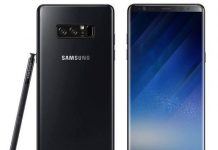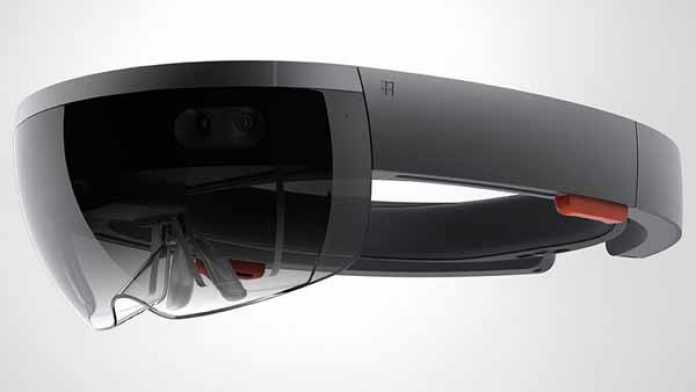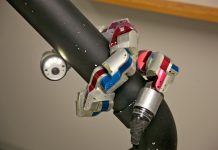Microsoft’s augmented reality, HoloLens, is the company’s another ambitious presentation to give the world something extraordinary. HoloLens is designed to transform your environment into an interactive virtual reality (not strictly), with the help of a headset and gestures. The technology caught spot light in the start of 2015 and now Microsoft has finally announced that the product will arrive in market next year, initially available for the developers only.
The revelation took place during a press release in New York. Augmented reality or ‘mixed reality’, as Microsoft’s self-defined term, means the virtual representation of useful programs integrated into your 3D space, whether it’s your home or office. The giant software company’s video preview of HoloLens boasts some outstanding features of the product; however, the practical version might be a little less daunting.

The demo video shows how Microsoft HoloLens automatically detects your surrounding space, decorating it with virtual gadgets like clock, television, pictures and much more. These virtual objects will be only visible through the screen of a wearable headset, while users will be able to interact, change and edit these objects using gestures. It will also create 3D holograms for 3D applications and 3D games, as shown in the debut.
If all of this turns out to be true, HoloLens is going to be an award winning celebration for the software company and the biggest leap since Windows and Office. According to the Microsoft, the product is stand-alone and fully untethered. This means there will be no wires, no phones or requirement of a connection to a personal computer. The device is completely independent and free of any annoying plug-ins and setups.
During the press conference, Microsoft’s executive vice president of the Windows and Devices group, Terry Myerson, said commenting on its gaming features that the device is based on spatial recognition software that allows AI enemies to use the surfaces of the room for their positioning and maneuver. Apart from that the players will also be able to distinguish the source and location of “spatial sound” during the game.

Myerson further unveiled that Microsoft HoloLens had been accepting applications from Windows developers. He also pointed out that they have been working with several other companies and organizations including NASA, Autodesk, and Case Western Reserve University. This is good news for the developers because the platform comes with a unique HoloLens Development Kit that will be available to indie developers for making games and apps.
It is worth noticing that HoloLens is not the lone candidate in the race of virtualization. It is going to face a head-on collision from Facebook and Google who are also working on similar products. What makes Microsoft’s manifestation of this tech really exclusive, is that unlike its contemporaries, HoloLens does not turn the users completely away from their environment but integrates into it. Thus, the term is coined, Augmented Reality as opposed to Virtual Reality.

Not to mention, Microsoft and Facebook are aboard the same ship, as the former is supporting the social network’s child company, Oculus VR for the development of Oculus Rift. So in a sense, Microsoft has artfully taken a higher ground, enjoying a better strategic position to influence the future of both missions. Now it’s up to Google, who was recently adopted by Alphabet, whether it shows with something more interesting than Google Glass or not.
Microsoft HoloLens will arrive in the first quarter of 2016, wearing a price tag of $3,000 for interested developers. The general users may have to wait for yet another announcement.

















